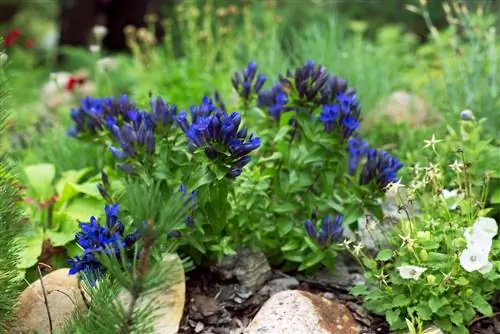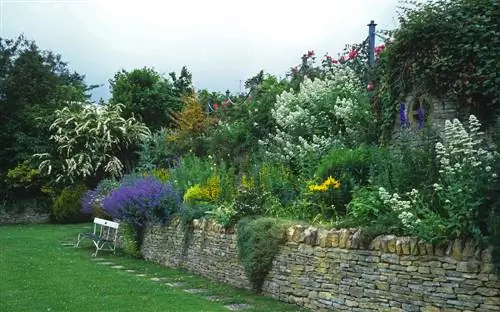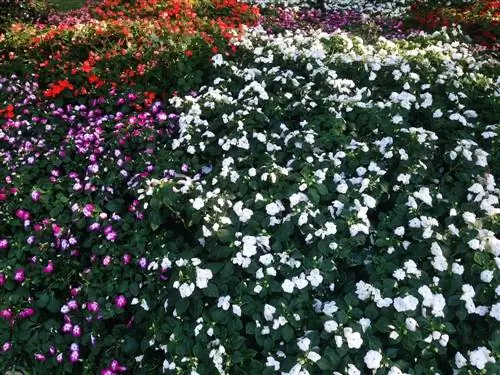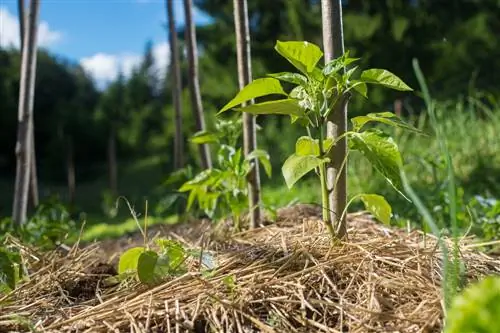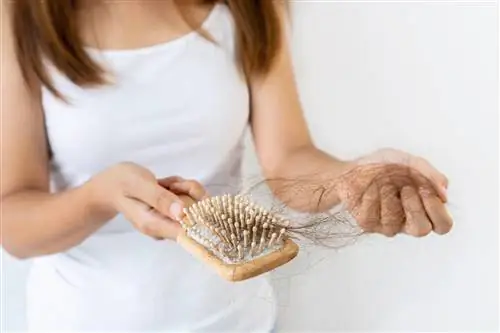- Author admin [email protected].
- Public 2024-01-10 23:11.
- Last modified 2025-01-23 11:21.
Mulch not only looks pretty, it also has a positive effect on the climate of the perennial bed. Below we have compiled a summary for you of the advantages of mulch and what and when it is mulched.
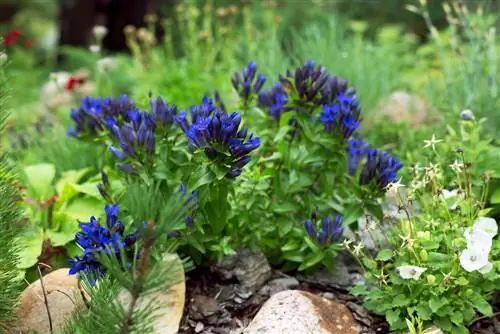
How and when to mulch a perennial bed?
When mulching a perennial bed, organic or mineral materials such as bark mulch, grass clippings, sawdust or pebbles are distributed over the soil. This prevents the soil from drying out, reduces weed growth, prevents erosion and protects the roots of the perennials.
The benefits of mulch
Mulch combines so many advantages that it almost seems illogical if someone doesn't mulch. Mulch makes more than sense, especially on a perennial bed that is intended to last for several years. Benefits include:
- Mulch protects the perennial bed from drying out
- Mulch reduces weed growth
- Mulch prevents erosion
- Mulch protects the perennial roots from heat in summer and from cold in winter
How to mulch the perennial bed?
When people think of mulch, many people think of bark mulch (€13.00 on Amazon), it smells good and looks fine. But mulch is more than just bark. First of all, there are two types of mulch:
- organic mulch
- mineral mulch
Organic Mulch
Organic mulch includes bark mulch, but not only! In addition to bark mulch, these materials can serve as mulch:
- Nutshells
- Grass clippings
- Sawdust
- Straw
- Coconut fibers
- Tree cutting
- Wood scraps
- leaves
Practically all organic materials that can be used extensively can be used as mulch. This means you don't have to dig deep into your pockets to mulch, you can simply use what you have in the garden.
Mineral Mulch
Mineral mulch is, for example, pebbles or slate. This type of mulch is particularly popular in rock gardens or on pebble beds.
When do you mulch?
You can mulch virtually all year round, whenever bare soil is visible. It is important that you enrich the soil with compost before mulching in spring in order to provide the perennials with sufficient nutrients. You can find out more about fertilizing your perennial bed here. It makes sense, especially in autumn, when the perennials have retreated, to apply an extra portion of mulch to protect the roots from frost.
Be careful when mulching: the disadvantages
Mulching unfortunately not only has advantages, but also a few disadvantages. The mulch offers snails an ideal place to lay eggs, so that more snails can appear in the perennial bed. On the other hand, it helps to remove all mulch in summer to get rid of the eggs. You should also be careful with mulch if it is constantly damp. Because mulch retains moisture in the soil, rot can occur. In humid areas you should therefore only apply a very thin layer of mulch.

